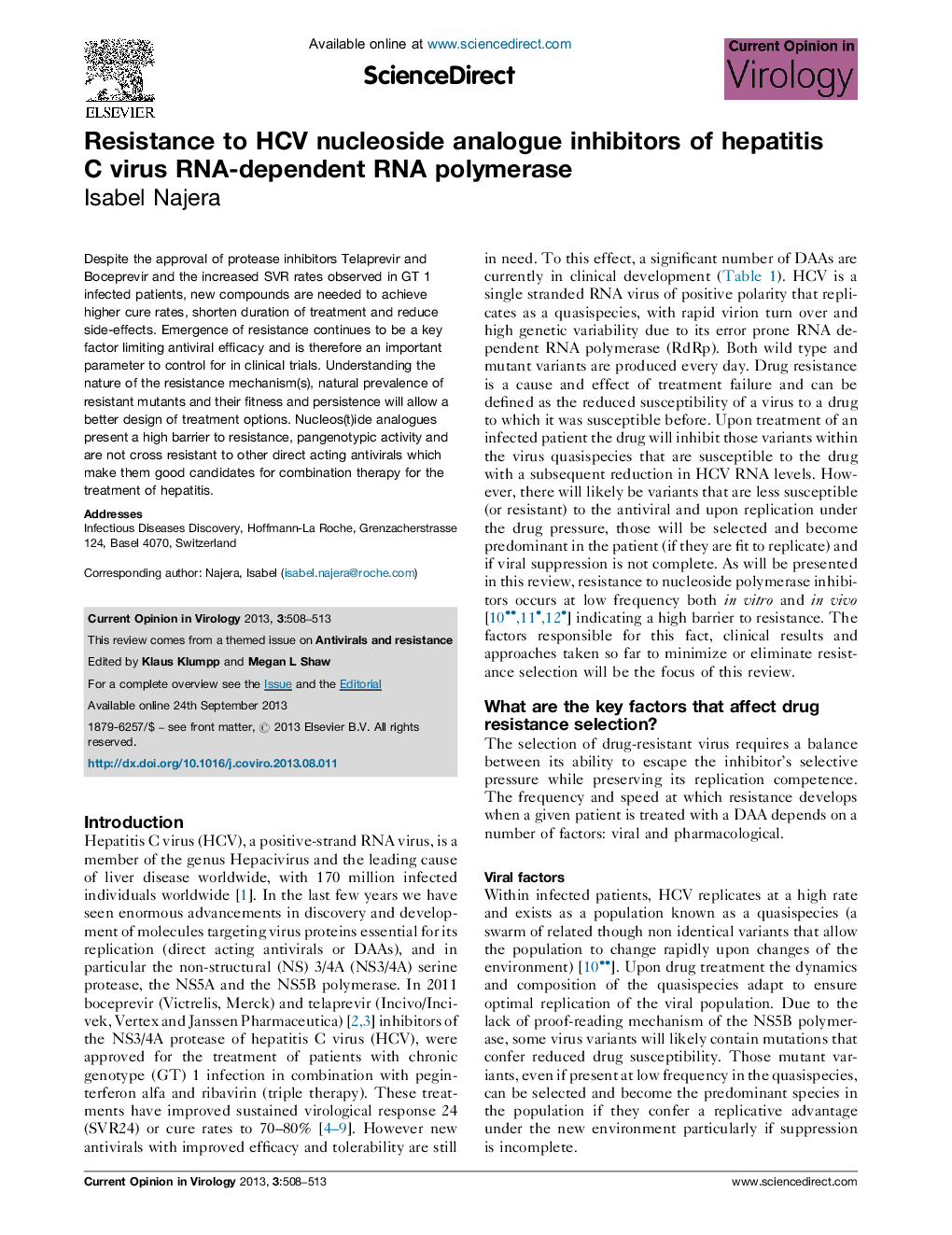| Article ID | Journal | Published Year | Pages | File Type |
|---|---|---|---|---|
| 5806886 | Current Opinion in Virology | 2013 | 6 Pages |
â¢HCV nucleos(t)ide inhibitors show high potential for HCV therapeutic agents.â¢They are active through interactions at the polymerase active site.â¢Due to the active site high genetic conservation, they are pangenotypic inhibitors.â¢Demonstrated high resistance barrier: low fitness and resistance of S282T mutant.
Despite the approval of protease inhibitors Telaprevir and Boceprevir and the increased SVR rates observed in GT 1 infected patients, new compounds are needed to achieve higher cure rates, shorten duration of treatment and reduce side-effects. Emergence of resistance continues to be a key factor limiting antiviral efficacy and is therefore an important parameter to control for in clinical trials. Understanding the nature of the resistance mechanism(s), natural prevalence of resistant mutants and their fitness and persistence will allow a better design of treatment options. Nucleos(t)ide analogues present a high barrier to resistance, pangenotypic activity and are not cross resistant to other direct acting antivirals which make them good candidates for combination therapy for the treatment of hepatitis.
